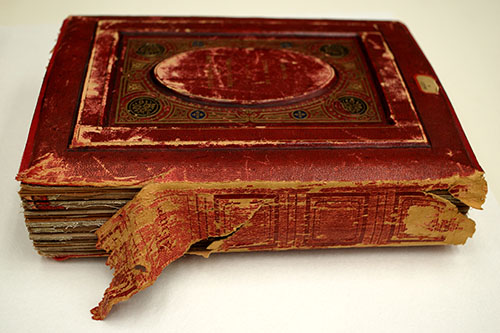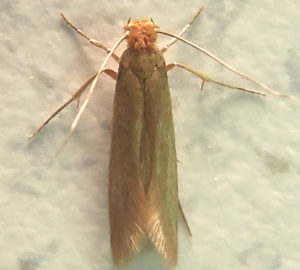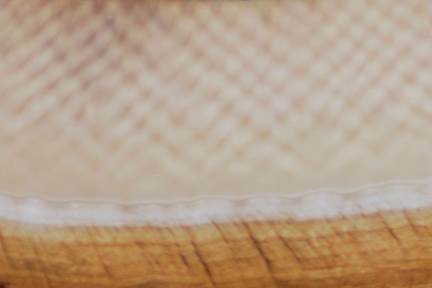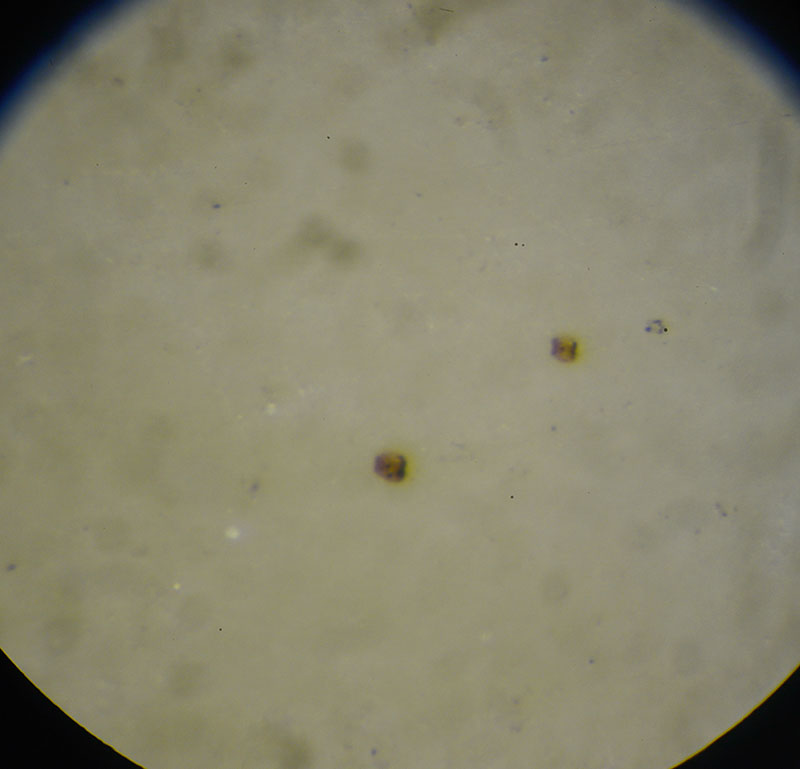Conservation
Diptera of Canada post
Jade Savage¹, Art Borkent³, Fenja Brodo¹¹, Jeffey M. Cumming², Gregory Curler⁴, Douglas C. Currie⁵, Jeremy R. deWaard⁶, Joel F. Gibson³, Martin Hauser⁷, Louis Laplante⁸, Owen Lonsdale², Stephen A. Marshall⁹, James E. O’Hara², Bradley J. Sinclair¹⁰, Jeffey H. Skevington²
1 Bishop’s University, Sherbrooke, Quebec, Canada 2 Agriculture and Agri-Food Canada, Canadian National Collection of Insects, Arachnids and Nematodes, Ottawa, Ontario, Canada 3 Royal British Columbia Museum, Victoria, British Columbia, Canada 4 Mississippi Entomological Museum, Mississippi State University, Starksville, Mississippi, USA 5 Royal Ontario Museum, Toronto, Ontario, Canada 6 Centre for Biodiversity Genomics, University of Guelph, Guelph, Ontario, Canada 7 California Department of Food and Agriculture, Sacramento, California, USA 8 Unaffiated, Montreal, Quebec, Canada 9 University of Guelph, Guelph, Ontario, Canada 10 Canadian Food Inspection Agency, Ottawa, Ontario, Canada 11 Canadian Museum of Nature, Ottawa, Ontario, Canada
Abstract
The Canadian Diptera fauna is updated. Numbers of species currently known from Canada, total Bar-code Index Numbers (BINs), and estimated numbers of undescribed or unrecorded species are provided for each family. An overview of recent changes in the systematics and Canadian faunistics of major groups is provided as well as some general information on biology and life history. A total of 116 families and 9620 described species of Canadian Diptera are reported, representing more than a 36% increase in species numbers since the last comparable assessment by JF McAlpine et al. (1979). Almost 30,000 BINs have so far been obtained from flies in Canada. Estimates of additional number of species remaining to be documented in the country range from 5200 to 20,400.
Keywords
biodiversity assessment, Biota of Canada, Diptera, flies, systematics
Read full article
James Miskelly¹, Steven M. Paiero²
1 Royal British Columbia Museum, 675 Belleville St., Victoria, British Columbia, V8W 9W2, Canada 2 School of Environmental Sciences, 50 Stone Rd. East, University of Guelph, Guelph, Ontario, N1G 2W1, Canada
Abstract
In the last 40 years, the number of species in the orthopteroid orders has increased by ~10% from that known in 1979. The largest order, the Orthoptera, has increased from 205 to 235 species known in Canada. The number of Blattodea has increased from 14 to 18 species, while Dermaptera has increased from 5 to 6 species. The number of species of Mantodea (3) and Phasmida (1) known in Canada have remained unchanged. Most new species records reported in Canada since 1979 have resulted from new collections along the periphery of the range of more widespread species. Some species reported since 1979 are recent introductions to Canada, including species restricted to homes or other heated buildings. The taxonomy of these orders has also changed, with only the Dermaptera having maintained its order definition since the 1979 treatment. Additional orthopteroid species are likely to occur in Canada, particularly in the orders Orthoptera and Blattodea. DNA bar-codes are available for more than 60% of the species known to occur in Canada
Keywords
biodiversity assessment, Biota of Canada, Blattodea, cockroaches, crickets, Dermaptera, earwigs, grasshoppers, katydids, mantids, Mantodea, Orthoptera, Phasmida, stick insects, termites
Read full article
Araneae of Canada post
Robb Bennett¹, Gergin Blagoev², Claudia Copley¹
1 Department of Entomology, Natural History Section, Royal British Columbia Museum, 675 Belleville Street, Victoria, British Columbia, V8W 9W2, Canada 2 Centre for Biodiversity Genomics, University of Guelph, 579 Gordon Street, Guelph, Ontario, N1G 2W1, Canada
Abstract
In 1979 nearly 1400 spider species in 32 families either had been recorded (1249) or were believed to occur (~140) in Canada. Twenty years later, although significant progress had been made in survey efforts in some regions, Canada’s spider inventory had only increased by approximately 7% to roughly 1500 species known or expected to occur. Th family count had increased to 38 but only two additions were truly novel (fie family additions and one family deletion were the result of advances in family-level systematics). The first comprehensive taxonomic checklist of Canadian spider species was published in 2010 documenting the regional distributions of 1376 species representing 42 families (three novel since 1999). From 2010 through 2017 new national records steadily accumulated resulting in the current (2018) Canadian inventory of 1477 species classified in 45 families (one novel since 2010). Although there has been close to a 20% increase in the number of spider species recorded in Canada since 1979, much greater increases have occurred in some of the regional species checklists, indicating increasing knowledge of the regional distribution of species previously recorded elsewhere in Canada. For example the regional checklists for Newfoundland, British Columbia, and Prince Edward Island have increased by 69%, 339%, and 520%, respectively. The national and regional increases reflect significant advances in the fist two decades of the 21 st Century in spider faunistics research in previously under-sampled habitats and regions and the development of molecular techniques and consequent bar-coding of spiders. Of the 1477 species recorded in Canada, 92% have been successfully DNA bar-coded resulting in 1623 unique Bar-code Index Numbers (BINs). At least 25 of the BINs are associated with relatively easily distinguished but undescribed morpho-species. Th majority, however, appear to indicate the existence of many cryptic species within Canada’s known spider fauna. Thse data, coupled with the fact that novel Canadian or even Nearctic spider species records (including of undescribed species) continue to accumulate annually (especially in habitat-diverse regions such as British Columbia), suggest that Canada’s tally of spider species may approach or even exceed 1800.
Keywords
Araneae, BINs, biodiversity assessment, Biota of Canada, checklist, classification, DNA barcoding, faunistics, spiders
See full article
Impact of Facility Renewal Deferment on Risk to Royal British Columbia Museum, Canada, Collections post
Abstract:
The Royal British Columbia Museum (RBCM), Canada, houses a collection of almost 7 million artifacts, archival records, and natural history specimens. Three comprehensive collection risk assessments over the past decade have resulted in improvements to the physical environments of the collections as well as new policies and procedures to reduce risk. However, there remain ongoing risks that can only be mitigated through major facility renewal. The last collection risk assessment, completed in 2016, was revisited to review the data and build a defensible case for funding to replace the RBCM’s on-site collection storage facilities. Changes to overall collections risk is a complex function of collection development and use trends, evolving risk factors both internal and external to the museum, a growing understanding of the relationship between risks and preservation, in addition to reduction due to risk mitigation projects and building systems aging and wearing out. A defensible method for illustrating the facilities-related risks over time involves estimating the expected loss of individual collection items or loss in value of a group of items that may occur if a major facility upgrade or redevelopment is not realized in the near future. Risk assessment data for representative collection units were reviewed to differentiate risk due to permanent facility characteristics versus more active controls, operations budget controlled risk versus capital budget controlled risk, and collection management-controlled risk versus facility management-controlled risk. This enabled the risk model to isolate risks that could only be mitigated through major facility upgrades. Change in collection value was expressed as Object Equivalents Lost (OEL) and its compliment Object Equivalents Remaining (OER). Projections into the future indicating the effect of varying facility renewal dates could then be clearly shown. Losses, when presented as numbers of items expected to be lost from the collection, become emotionally salient to persons in senior management and governance roles.
Originally published in What’s inSight Magazine, Winter 2013. Subscribe to What’s inSight by becoming a member here.

Close-up of the damaged and spine of a Dally album, suffering badly from red rot.
Digitization is the big buzz word in archives and museums these days. We can digitize documents, images, sounds, even whole objects and we can share them on the internet, in our galleries, in on-and off-site educational programs and in our reference room. The Royal BC Museum even has a 3D digital printer that uses high-tech laser scans to produce replicas of almost anything.
But is a digital facsimile really an exact replica of the original? Digital copies are created using a finite number of data points. These points represent samples of the surface of the original object. The more data points, the higher the resolution of the digital copy. It is impossible to gather every possible data point, so what you have is actually an approximation of the original, not an exact copy. There are many other reasons why a digital replica is not identical to the original: the colour might be a little different depending upon the calibration of the equipment; the texture can be slightly smoother or rougher, due to the method by which the software fills in missing information; the sound may be a little fuzzier or missing certain registers due to equipment limitations; even whole parts of the original might not be reproduced, by choice or by accident. These copying deficiencies are why it is so important to retain and preserve the original.
This is where the relationship between digitization and conservation comes in. Museums and archives do not seek to replace the original (except in very Conserving Collections in a Digital Age rare circumstances when the original object faces imminent demise), but rather to make copies as accurately as possible, even though they are incomplete.
Preservation copies of original materials may be made to save what is left of a rapidly deteriorating object. An example is magnetic sound recordings, which have a short lifespan. Many videotapes have an expected life of 30 years, less if they have not been stored and used in ideal conditions. Digital copies of videotapes and sound recordings may be the only surviving record in the near future. As you may have read in the previous editions of this magazine, cool storage can prolong the life of magnetic media, but because it cannot be frozen, the deterioration is only delayed, not halted. Adding to this problem is the obsolescence of formats and playback equipment. Who remembers reel-to-reel tape recorders, eight-track music players or vitaphones? Even if the recordings survive, what use will they be if the machines required to play them no longer exist? For these reasons, digitization may represent the only means of saving large segments of our media culture.
Digitally reconstructed animation of a Chinese Freemasons’ lantern as it may once have looked.
The conservator’s role is to facilitate digitization, to help make the collections more accessible. In rare cases an archival record or museum object is not appropriate for digitization. An item may be so large and/or heavy that it cannot be scanned or photographed safely with existing equipment. In the case of books, the text may extend into the gutter of the spine, so that the only way of exposing the information is to remove the binding – something rarely done, especially if it means damaging a historic book. If an item requires significant conservation work, digitization may not proceed until there is sufficient project time and funding to do the work.
Conservation is often the first stop in a digitization project. Before an original record is digitized, a conservator will inspect and assess it to decide if it can go straight to the imaging studio or if it needs some minor repairs or preparation first or requires stabilization treatment before digitization can take place. Simple preparatory work might include surface cleaning to prevent the spread of dirt to other parts of the object during handling or to make details of the surface clearer. Occasionally a complex conservation treatment may be necessary before digitization. Broken bindings should be repaired and leather with red rot requires consolidation. Loose and torn pages must be secured, areas affected by mould should be cleaned and may require repair. Powdery or flaking pigments need consolidation. Rolled documents and textiles may require humidification for flattening before digitization and custom supports are usually a must for three dimensional objects. The conservator may suggest specific support and handling techniques be used during the digitization process. A collection manager or preservation specialist may be required to assist or, in extreme cases, conservators may do all the handling themselves.
Conservation and digitization are related in other ways too. For example, digital facsimiles can be used to analyze and even enhance the original for research and presentation purposes. Conservators have used laser scanning and reflectance transformation imaging to examine and measure minute details of objects, including clues to manufacturing methods and changes due to use and deterioration. As discussed above, 3D printers can also be used to reproduce objects so that they can be shared with more people and in vastly different locations and for different purposes, without compromising the original – an effective preservation strategy.
The Chinese Freemasons’ lantern arrived at the museum and archives in such dilapidated condition that even heroic conservation treatment methods could not restore it to its former glory but could only stabilize what was left. Further restoration would have been based on guesswork, and therefore not appropriate. Fortunately, a digital representation of the lantern as it may have once looked when the moving parts rotated, the coloured lights were illuminated, and the paints and textiles were vibrant, presents the viewer with an amazing likeness of something that no longer exists. Digital imaging has also been used to replicate the unsalvageable decorative plastic film on the lantern, replicating the original pattern on a new, more stable Mylar material. The Chinese Freemasons’ lantern does not sit well on a flat surface, but rather is supported and secured with lead weights. In the future the Royal BC Museum hopes to use laser scanning and printing to build precisely fitting supports to cradle fragile objects on exhibit or to pack them gently inside a shipping crate.
Clearly, conservation and digitization are intrinsically linked in the world of museums and archives. The next challenge facing us is just how we are going to conserve all the digital information we are creating.

Webbing Clothes Moth, Tineola bisselliella. (Patrick Kelley, Insects Limited, Inc.)
Generations of people have grown up at the Royal BC Museum. This includes the babies that come in strollers with their parents, the multitudes of youth that visit with their school groups, college students who find summer employment as camp leaders, tourists, parents and grandparents. Museums attract them all. Museums also attract insects. Vast collections of furs, feathers and textiles – on exhibit and in storage – provide a tempting food source for young larvae.
The adult insects arrive on the clothes of staff and visitors, through cracks in the walls and under door sweeps. Occasionally, these opportunistic interlopers find their way to collections, where they settle down to raise their families. Their needs are basic; a quiet place in the dark that is free of predators, a nice stable climate and an ample source of food. A bear skin rug, woolen uniform, or a cozy moccasin is move-in ready.
After they take possession of their lovely new home, the eggs are laid and not long after, the larvae hatch. The larvae create their very own receiving blanket, a sort of cocoon made of extruded silken material mixed with fibres stolen from the artifact around them. Larvae are hungry little beasts and waste no time beginning to feed … on their own home of all things! This is where the story gets scary. Those furs, feathers and textiles can be digested at lightning speed, leaving nothing behind but frass, or tiny fecal pellets. The damage is done, and often it is devastating.
Ivory Identification post
I arrived at the Royal BC Museum in May, just as Mammoths! Giants of the Ice Age was opening. As I walked among the mammoth ivory, I considered the importance of ivory identification. Elephant ivory is regulated due to the threat of poaching. (For more information, check out the United Nations Convention on International Trade in Endangered Species of Wild Fauna and Flora, also known as CITES). I recalled flow charts, diagnostic tables, and diagrams, but could I identify ivory in practice?
Although most of our work is stabilization, Conservation has a small store of supplies for restoration, including ivory piano key veneers. I compared these with a souvenir piece of mammoth ivory to see if I could differentiate between elephant and mammoth. The mammoth ivory displayed very clear Schreger lines, crisscrossing patterns visible in cross section, which are only present in proboscidean ivory. I thought I would finally be able to use Schreger lines to distinguish between elephant and mammoth. Elephant Schreger lines cross at an angle greater than 115°. Mammoth Schreger lines cross at an angle less than 90°. More information on how to measure Schreger lines can be found in CITES’ Identification Guide for Ivory and Ivory Substitutes found here.

Schreger lines in mammoth ivory
I took five angle measurements from the mammoth ivory and determined a Schreger angle of 92°. This favoured mammoth, as expected, but is technically in a gray zone. Schreger lines are not always conclusive and often not visible on art objects.
There are many ivory substitutes including other animal products and plastics. I found an unidentified piece of “ivory.” It had a different texture and heft and “felt” like plastic to me. I tested my hypothesis using a variety of methods, starting non-destructively.
Ivory has a wide range of fluorescence including bluish white while plastic ivory substitutes fluoresce dull blue. Everything fluoresced bluish, but I couldn’t confidently characterize the colour beyond that. I moved to a static test that I found in Eva Halat’s Contemporary Scrimshaw. I rubbed the ivory samples and unidentified “ivory” with wool and touched them to small polyester fragments. According to Halat, artificial materials retain more static charge than ivory. The unidentified piece picked up and held the fragments … as did the mammoth ivory. Confused, I tried again. Upon closer inspection, I realized the mammoth ivory was coated. The very glossy surface had brush strokes. This may also explain why fluorescence was inconclusive.
I moved to the destructive “hot pin” test in which a red-hot metal pin is held against the sample; this test is NOT for museum objects! The pin produced small dark burn marks on the veneers. In contrast, the pin sank into the mystery sample, melting the surface. This was dramatic confirmation that the sample was plastic.
This testing could not have been performed on museum collections, but it gave me some hands-on experience for the next time I am presented with “ivory.”

Result of the hot pin test on ivory piano key veneers under magnification. The pin created shallow, charred-looking indentations in the surface.

The result of the hot pin test on the mystery sample under magnification. The pin melted a deep recess in the surface with blackened edges.
Lisa Imamura
Conservation Intern
Queen’s University Master of Art Conservation Program 2016

